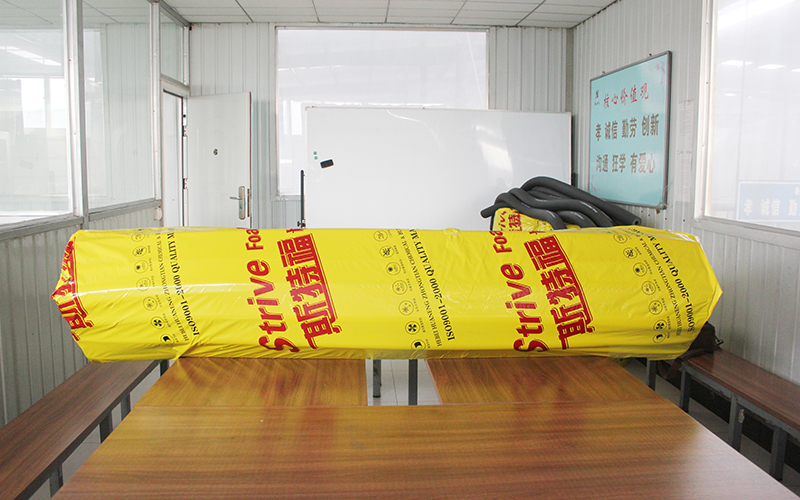Alaskans who have spent a winter shivering in a drafty home, battled condensation and mold or been shocked by a utility bill during the colder months know how important it is to ensure a home is properly insulated and does not leak air.
Right now, federal income tax credits included in the Inflation Reduction Act mean that homeowners who improve the energy efficiency of their home through insulation upgrades will not only benefit from a healthier and more comfortable space, they may also reap financial benefits. Building Insulation Materials

Adding insulation to a home may be a more advanced DIY process than most homeowners are prepared to handle, and some insulation types require professional equipment. However, basic insulation knowledge can help homeowners plan their energy efficiency upgrades and know which questions to ask contractors.
Common insulation types include flexible blankets made from mineral fibers, blown-in loose-fill fibers or fiber pellets, foam insulation and rigid insulation.
The appropriate type of insulation for a project will depend on factors such as climate, insulation location and the availability of material.
Each insulation type has a different R-value, or thermal value, that indicates how resistant insulation is to heat flow. A higher R-value means the insulation material is more effective, but even the best insulation deteriorates over time, and more rapidly in harsh climates.
While there is not much that can be done to improve wall insulation in homes after initial construction, experts recommend regular checks of attic and basement insulation.
Sufficient insulation in an attic is essential for minimizing energy waste and heat loss in colder climates.
A visual assessment may be enough to determine if an attic is sufficiently insulated for another season, or if it is time to add another layer of insulation or call in an expert.
ENERGY STAR advises that if your insulation is at or below the floor joists in your attic, it might be time to add more. You can also use a measuring tape to determine how much attic insulation is in place and check it against recommended levels.
Depending on the space, a homeowner might add more blanket insulation to raise attic insulation to the desired levels. If the attic insulation is difficult to access or has become moldy and damaged, then most homeowners will want to employ an expert.
ENERGY STAR offers step-by-step instructions to help you determine when you should apply more insulation, how to get the job done, and when to call in the professionals.
Similarly, even if a basement is unfinished or only used for storage, maintaining proper levels of insulation will help keep the home comfortable and not drain warm air (and your bank account). In fact, uninsulated basements may account for up to one-third of heat loss in an average home.
Visit ENERGY STAR’s webpage on basement insulation to determine the appropriate insulation type for your climate and space and view their safety information and instructions for the DIYer.
Like insulation, air sealing by caulking or weatherstripping cracks and openings around doors or window frames reduces the amount of air that leaks in and out of your home.
Air sealing prevents drafts of cold air during the winter, helps to keep cooled air inside during the summer and prevents moisture problems that can be hazardous to both your home and your health.
This is one of the most important steps in weatherizing a building and is essential for moisture control. Without proper air sealing, insulation will not be as effective.
The U.S. Department of Energy recommends that homeowners hire a weatherization expert such as an energy rater to evaluate their home for air leaks. These experts can perform air tightness tests using a blower door system to identify areas of inefficiency and make sure the home is getting proper ventilation. Once an expert identifies where a home is leaking air, they can draw up a plan to safely seal those areas.
With the passing of the Inflation Reduction Act in 2022, now is the perfect time for homeowners to improve their energy efficiency.
The Inflation Reduction Act provides federal income tax credits up to $3,200 a year to lower the cost of energy efficiency upgrades, including energy audits, home insulation and installing new doors and windows.
The 25C tax credit was expanded as part of the Inflation Reduction Act, meaning that homeowners may now receive tax credits for improvements to insulation and heat pump upgrades in the same calendar year.
Federal tax credits help make energy efficiency upgrades achievable for homeowners, but the real financial incentive is the potential to save on utility costs for years to come.
Alaska Housing’s department of Research and Rural Development estimates that insulating, air sealing and other energy efficiency improvements can reduce heating costs by 30% or more.
Interested in improving your home’s energy efficiency but don’t know where to start? Alaska Housing has an online Resource Information Center (RIC) where you can enhance your energy education and get in touch with experts. When you’re ready to take the next step, visit the AHFC website for a list of qualified energy raters in your area.
Mon - Fri 8am - 5pm
800-478-2432 Toll Free in Alaska
4300 Boniface Parkway Anchorage, Alaska 99504 - View on Map
Mailing Address: P.O. Box 101020 Anchorage, Alaska 99510

Insulation Material For Walls Copyright 2013 to 2024 Alaska Housing Finance Corporation. All Rights Reserved.